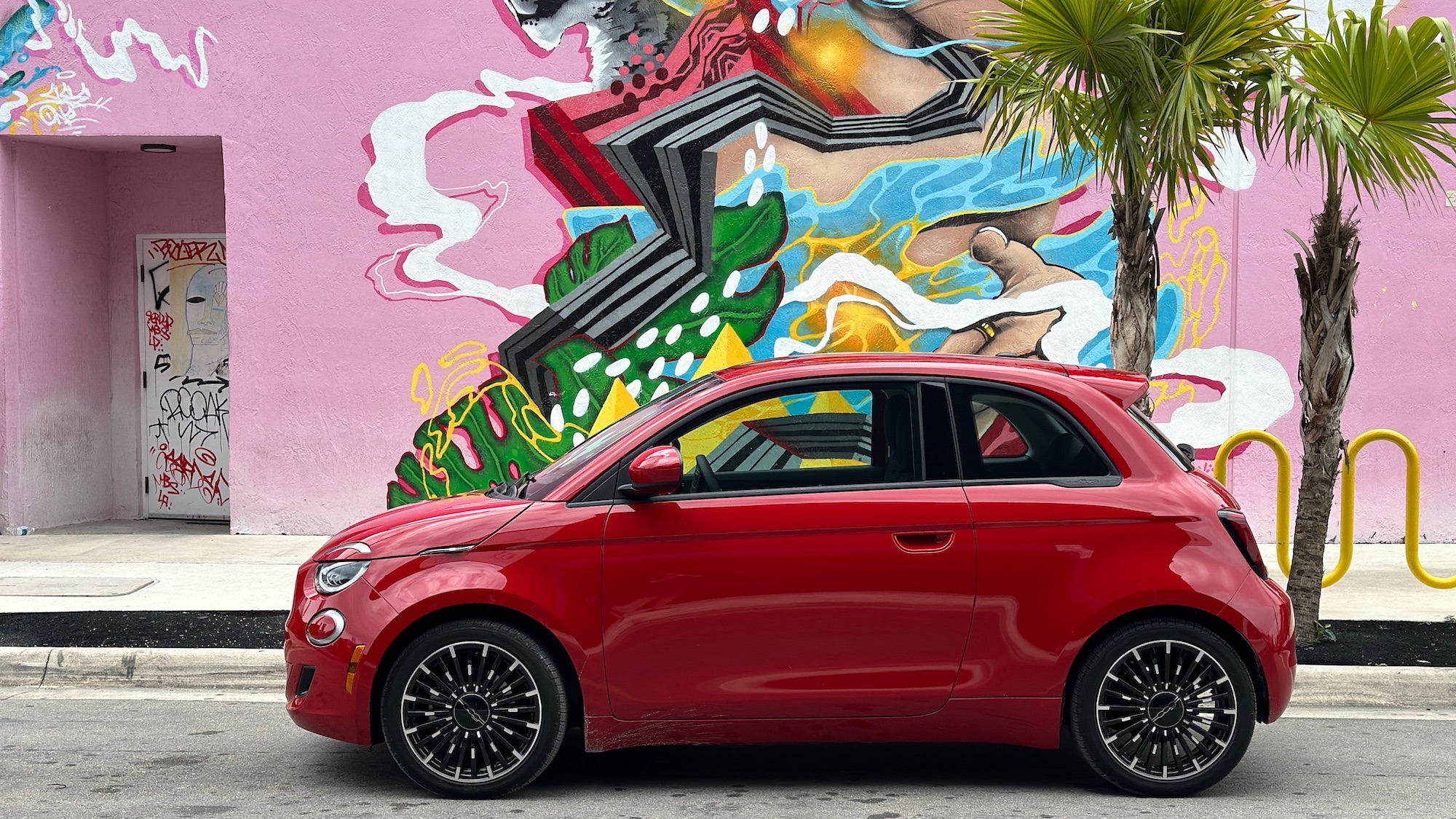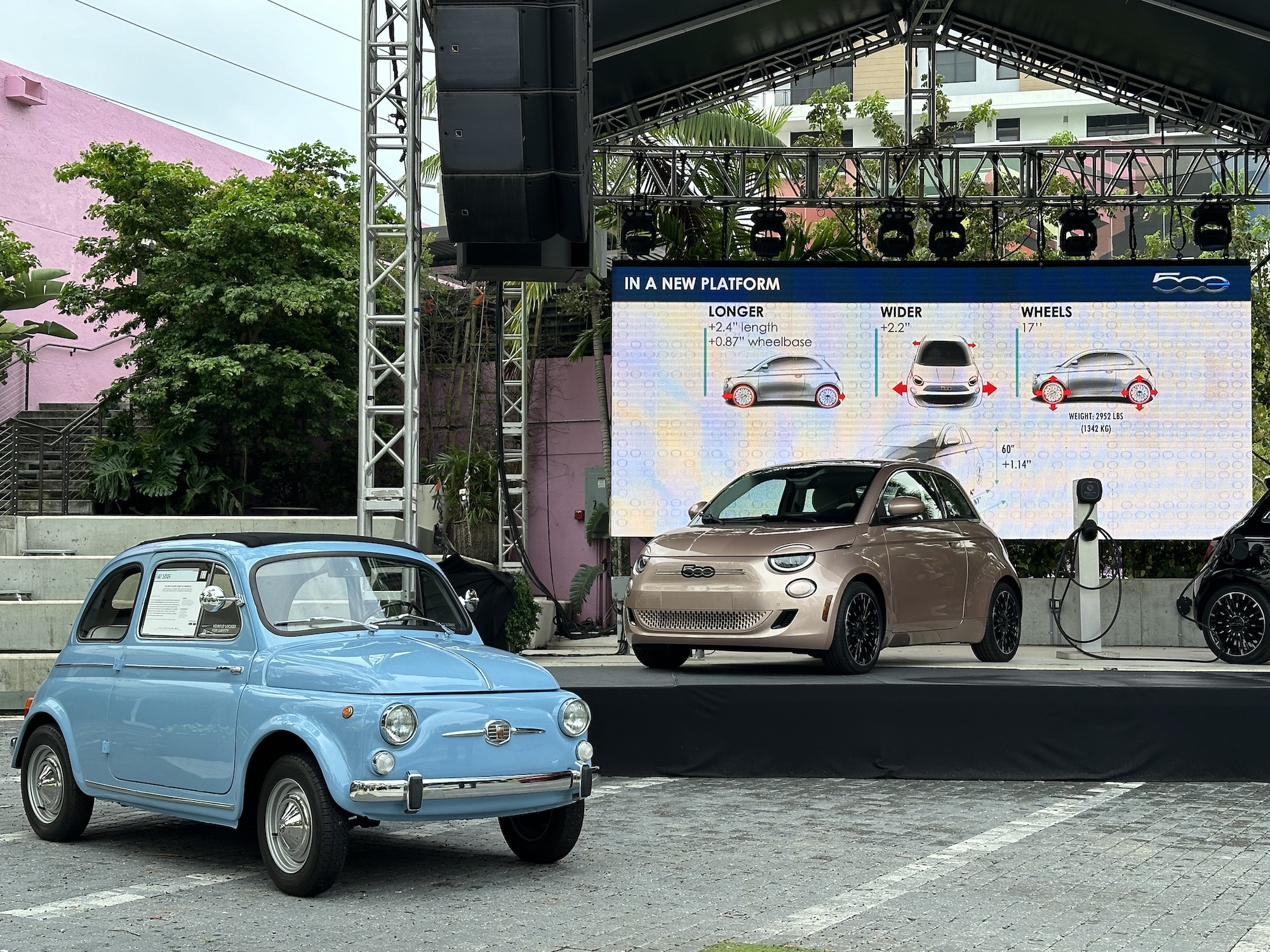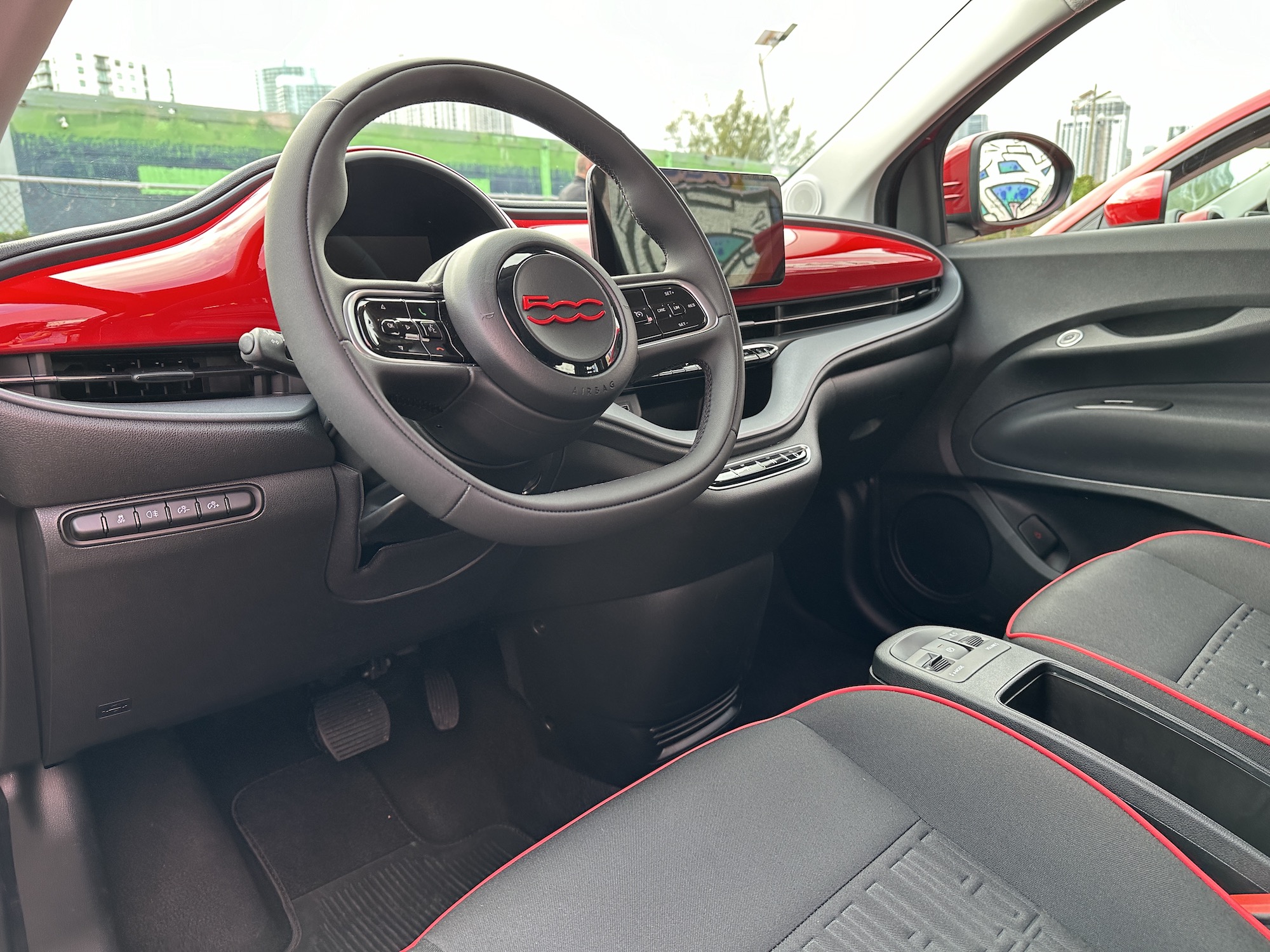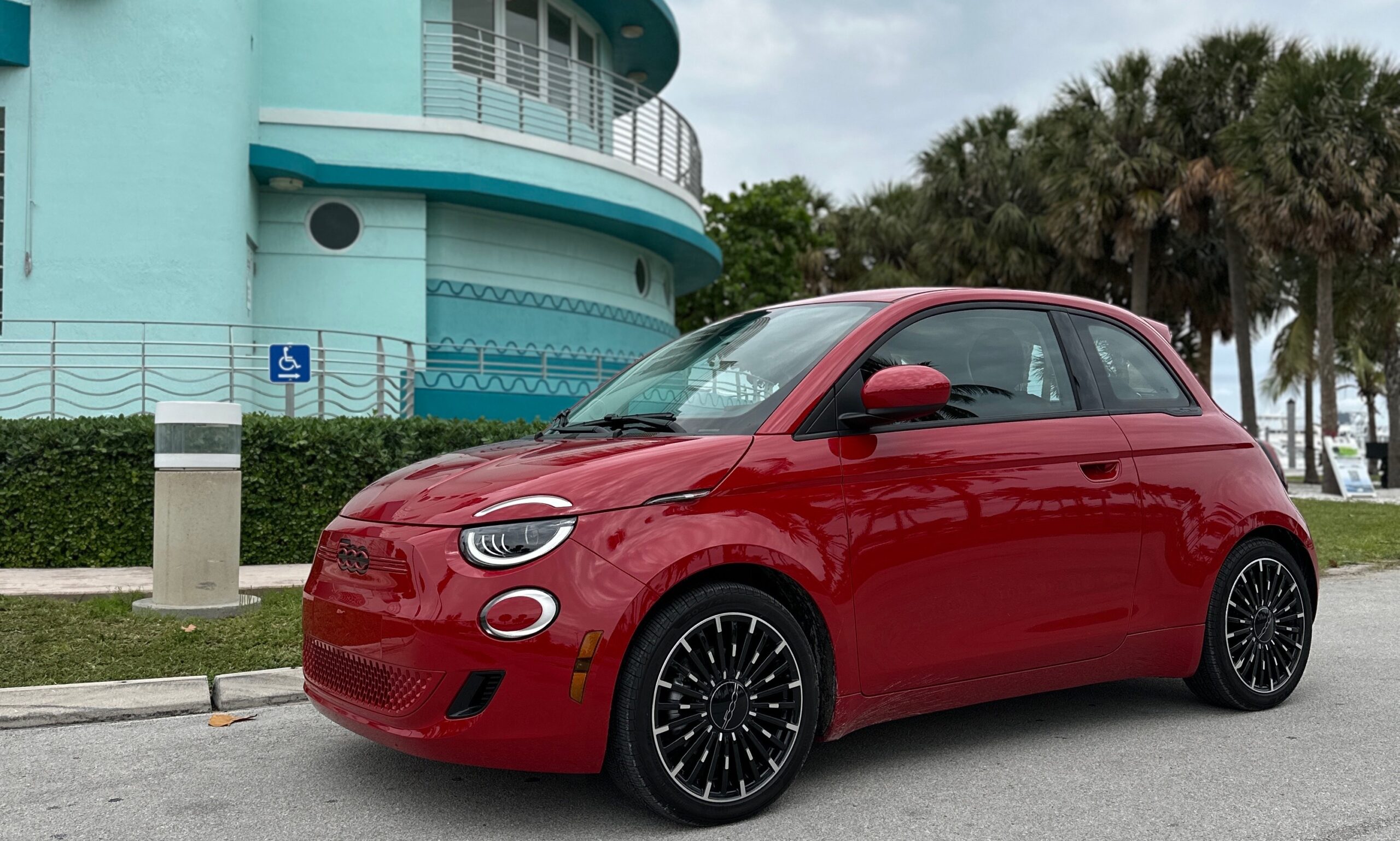Beep beep: Fiat charms city drivers with revived all-electric 500e
Now with a 149-mile range, the tiny car is ready for urban driving, if America will have it.

In 2013, Italian automaker Fiat launched its first EV, the 500e. The car was sold only in California and Oregon and discontinued in 2019. Going back to the drawing board for a European-spec 2000 model, Fiat built a new EV-only platform for its next generation. The small EV has reached American shores once again with a renewed commitment and a slightly larger package; the 2024 Fiat 500e is 2.2 inches wider and 2.4 inches longer than its predecessor.
While the 2024 model is bigger, Fiat managed to trim 50 pounds from the overall weight for a total of 2,952 pounds. EVs tend to be heavier, like the 4,861-pound Hyundai Ioniq 5 or 4,000-pound Volvo EX30, so the 500e is noticeably light on its feet. Maxing out at 149 miles of range, Fiat’s new EV is made for city driving, and it’s right at home in Europe. But can it fit into the American lifestyle? We drove it on the city streets of Miami’s Wynwood art district to find out.
Small package, big hopes
In 1957, American cars were getting bigger and bigger. Creased metal adorned the back end of sedans like the Chevrolet Bel Air in the form of stylish fins, and trunks were massive. That wasn’t the case in Italy, where Fiat launched its 500–a tiny, rounded car that seemed to barely encase its occupants.

When the first 500e launched in 2013, EVs weren’t on the fast track they are today. The experiment was carefully controlled, and retracted before the pandemic turned the world upside-down in 2020. When it launched in 2013, the range was considered good; not so much anymore.
“The 500e boasts an EPA-estimated range of 87 miles, an above-average number for an EV,” Edmunds reported in 2013. “Further, Fiat says its EV hatchback can fully charge in less than four hours from a 240-volt outlet, also a good figure for this class.”
Things have changed a lot in 10 years, and 87 miles is no longer impressive. Fiat relaunched its 500e in 2020 in Europe with a new platform and more than doubled its range to 199 miles on the European testing cycle. Seeing the diminutive 500e’s success across the pond, Fiat’s hopes were high for the car’s American rebirth.
“We realized we had magic in a very small package,” Fiat North America Aamir Ahmed says. “When we’re talking electrification, many [cars] lose their character. And now we take an electric battery and power this car that’s filled with charisma.”
This is a very different message than the one offered by Fiat maestro and chief executive Sergio Macchione a decade ago. Frustrated by federal and state mandates that encourage automakers to build EVs, Marchionne rebelled against the status quo.
“I hope you don’t buy it because every time I sell one it costs me $14,000,” he told the audience at the Brookings Institution in 2014. “I’m honest enough to tell you that.”
Today’s 500e is primed for the current EV appetites, and it’s designed to be a city car for those who drive the average (according to AAA) 30 miles a day. At that rate, one could go nearly a week between charges, and as charging infrastructure ramps up, it could be as easy as charging up at the coffee shop. With 85 kW of DC fast charging capability, the 500e can go from 10 percent to 80 percent in 35 minutes, Fiat says.
Fresh engineering and Andrea Bocelli-influenced acoustics
Chief engineer Paolo Gribaldi has been working on the 500e for the last two years, and he says the time frame was the most challenging piece of this project; it had to be finished in 22 months. The 500e (cinquecento, in Italian) was designed on a purpose-built platform, the first created for EVs. It’s fitted with the same power source as its older cousin in Europe, a 42 kilowatt-hour nickel manganese cobalt battery.
Sporting 17-inch wheels and lower-profile tires, the previous model’s 15-inch wheels look way too small when compared side by side. Slide behind the wheel, and there is no need for a “start” button. It starts up when it detects the key fob, much like Volkswagen’s ID.4. The flush door handles are lifted from its sibling company Maserati, also owned by Stellantis, which helps with both aerodynamics and economies of scale. Other enhancements are under the surface.

“The suspension uses a wider track than the previous generation to fit the larger battery,” Garibaldi explains. “Then there were improvements to the brake system.”
Also cribbed from the European version is the set of drive modes, which Fiat calls Normal, Range, and Sherpa. Normal mode offers low regenerative braking and a driving experience that feels “normal” to those used to combustion-engine vehicles. Range mode tweaks the regen for typical-EV one-pedal driving, slowing the car to a stop when lifting your foot from the accelerator. Lastly, Sherpa mode optimizes range by reducing power from 117 horsepower to 90 horsepower and turning off the heating and cooling system. Equivalent to what others call “Eco” mode, the maximum speed is set to about 50 miles per hour, which is fine for urban driving.
I tried it in each mode, and I can say that driving in Miami (or anywhere it’s warm, really) in Sherpa mode is not pleasant with the air conditioning off. Opening the windows is an option, but then you’re altering the aerodynamics and thus, range. I can see how it could be helpful if you’re limping home or into a charging station and need to stretch the miles as far as possible. Most gas-powered car fans will appreciate the seamless transition to EV in Normal range, which feels familiar, and Range mode is handy in stop-and-go traffic.
Fiat isn’t above having a little fun with its new EV, and it tapped one of the most famous Italian musicians–tenor Andrea Bocelli–to create concert hall-level sound inside its “Inspired by Music” limited edition model. Once the car reaches 20 miles per hour for the first time after starting up, the 500e’s pedestrian alert “sings” a tune called “The Sound of 500” composed by Flavio Ibba and Marco Gualdi. It’s just another way to communicate its unmistakable Italianness to passersby.
This car is iconic and fun to drive, and it fits perfectly into a city environment. It’s not perfect, nor is any car, but it’s worth a look for those seeking a compact, adorable EV with the ability to park just about anywhere. And it doesn’t hurt that it includes Maserati parts, either: a city car with big aspirations.

